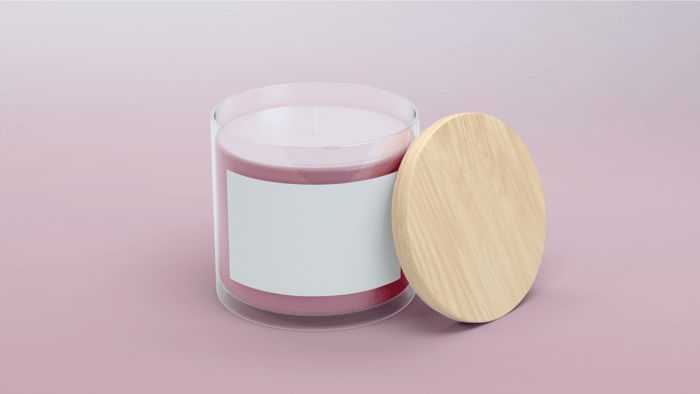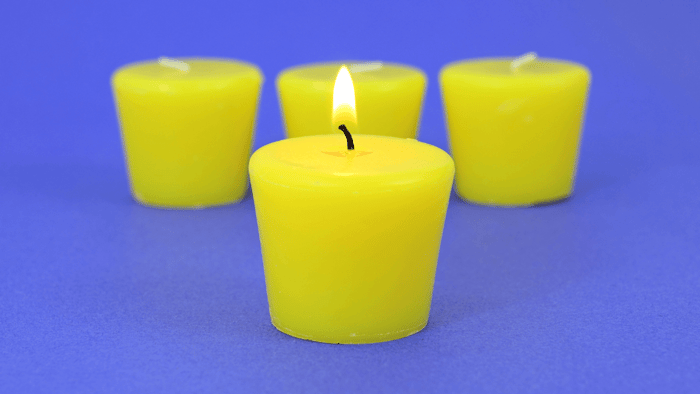You've undoubtedly read about needing CLP labels for candles & wax melts if you've been crafting your own and you might feel like your head is about to fall off due to information overload. But don't worry! This blog will break it all down in a simple, approachable way so you can ensure your products are safe, compliant, and ready to shine!
So, what exactly are CLP labels for candles & wax melts, and why are they so important? Let’s dive in.
What Exactly Are CLP Labels?
CLP stands for Classification, Labelling and Packaging. It’s a regulation derived from the EU and UK laws that applies to products containing hazardous chemicals - including the fragrance oils found in candles and wax melts.
Even though your creations smell amazing, fragrance oils can pose health risks. That’s why it’s legally required to include a CLP label if your product contains any amount of hazardous substances (which most fragrance oils do). These labels inform customers of potential hazards, allergens, and safety precautions associated with using the product.
Whether you’re just starting or already selling your home fragrance creations, understanding CLP labels for candles & wax melts is a vital step in running a responsible, legal business.
Further reading on CLP is highly recommended, and you can explore the official guidance here - echa.europa.eu/regulations/clp/understanding-clp
It’s crucial that you fully understand the CLP regulations before selling any of your products, as it’s your legal responsibility to ensure your labels are accurate - this isn’t a step to skip, but an essential part of running a safe and compliant business.
Why Are CLP Labels Important?
Imagine a customer lighting one of your beautifully scented wax melts, unaware that it contains allergens that could trigger a allergic reaction. CLP labels prevent that scenario - by clearly stating what’s in your product and how to use it safely.
But it’s not just about compliance. CLP labelling -
Shows your professionalism
Builds trust with your customers
Protects your business from potential liability
Reflects your commitment to consumer safety
By properly using CLP labels for candles & wax melts, you're not only following the law but also creating a more transparent and customer-friendly business!
What Should a CLP Label Include?
Creating a compliant label might sound daunting, but once you know what’s required, it becomes second nature. Whether you’re selling candles, wax melts, or reed diffusers, here’s what each CLP label must contain -
1. Product Identifier
This is the name of your product – for example, “Fresh Unstoppable Wax Melt”. It should clearly identify the fragrance variant you're labelling.
2. Hazard Pictograms
These diamond-shaped symbols indicate the type of risk. Common ones include the exclamation mark for irritants. The exact symbol(s) depend on the classification of your fragrance oil.
3. Signal Word
There are two signal words: “Warning” for low-to-moderate risks and “Danger” for higher-level hazards. Only one should appear on the label, based on the severity of the risk.
4. Hazard Statements
These are short phrases like “May cause an allergic skin reaction” or “Toxic to aquatic life with long-lasting effects.” You’ll find the appropriate hazard statements on the CLP documentation supplied with your fragrance oil.
5. Precautionary Statements
These include safety advice such as:
“Keep out of reach of children.”
“If on skin: Wash with plenty of water.”
Choose only the relevant ones based on your product and the oil used.
6. Allergen Information
List any allergens that are present in the fragrance oil, such as Linalool, Limonene, or Citronellol. These must be listed if they’re present above the threshold level, which will be detailed on the SDS or CLP document.
7. Supplier Details
Include your business name, the door number/building name where your products were produced, and your contact number. This is legally required, and it reassures customers that your product is traceable and professionally made.
How to Create CLP Labels for Candles & Wax Melts
Now that you know what should be on the label, let’s look at how to put it all together. Here’s a step-by-step guide:
Step 1: Get Your CLP Data
Your fragrance oil supplier should provide a CLP 10% non-hazardous base label template, especially if you're using the oil at up to 10% concentration (standard for most candles and wax melts). This template will include the hazard symbols, statements, allergens, and precautionary details you need.
Step 2: Confirm Usage Rate
Check the maximum usage percentage allowed for each fragrance. If you're using the oil at 10%, you'll use the CLP label for 10% concentration. If you're using less, you may still need to label if hazardous components are present.
Step 3: Design Your Label
Use the information provided to format your label clearly. You can do this manually using graphic design software, or you can try online CLP label generators. If you’re unsure, consider outsourcing this task to a professional – several businesses offer this service for a small fee.
Step 4: Add Allergens
List the allergens as stated in the CLP template. These must appear in the body of the label, often directly below the product name or in a separate allergen section.
Step 5: Include Precautionary and Contact Info
Finalise the label by adding precautionary statements and your business contact details. Make sure the text is legible, and everything fits neatly on your product.
Some precautionary statements listed on the Safety Data Sheet or CLP document are not required for end-use products like candles and wax melts, so these can be omitted – focus on the ones relevant to your final product and its usage.
Are CLP Labels the Same for Wax Melts, Candles, and Diffusers?
Yes - CLP labels for candles & wax melts follow the same guidelines as reed diffusers, provided they contain hazardous fragrance ingredients. As long as the product contains chemicals (even in small amounts), CLP regulations apply.
The main difference is in how the label is applied:
Wax melts - often labelled on the packaging or clamshell
Candles - label can go on the base or outer packaging
Reed diffusers - typically labelled on the bottle or box
Pro Tips for Easy CLP Compliance
Use a CLP Label Supplier: There are many reputable suppliers out there who make CLP labels - just email hello@houseofscent.com and we'd be happy to put you in touch with some reputable CLP suppliers.
Print on High-Quality Label Paper: If you choose to make your own, ensure your labels are resistant to heat and moisture – especially for candles.
Keep CLP Templates Organised: Store a copy of each fragrance’s CLP data in a digital or printed folder for easy access.
Update Labels if Formulas Change: If you reformulate or switch fragrance oil suppliers, review the CLP data again to ensure your CLPs are correct.
Final Thoughts on CLP Labels for Candles & Wax Melts
Mastering CLP labels for candles & wax melts might feel intimidating at first, but once you understand the structure and legal requirements, it becomes an empowering part of your craft business. Not only do these labels keep your products compliant, but they also build customer trust and ensure safe usage.
So next time you package a candle or wax melt, feel confident knowing that your CLP label is doing more than ticking a box – it's protecting your brand, your customers, and your reputation.
Ready to get started? Grab those CLP templates, fire up your printer, and show the world just how professional your candle and wax melt business can be – safely and beautifully!
Join a supportive community of passionate crafters and small business owners who truly get what it’s like to build something from scratch. At House of Scent, we’re more than just a brand - we’re a space for creators to connect, share advice, swap tips, celebrate wins (big and small), and lift each other up through the rollercoaster of handmade business life. Whether you're just starting out or scaling up, there's a place for you here!






.jpg)






